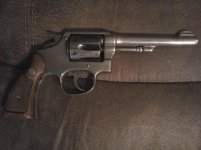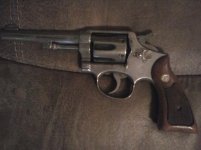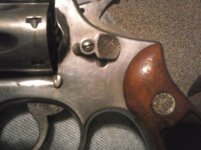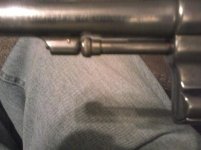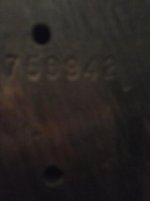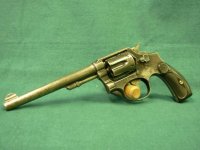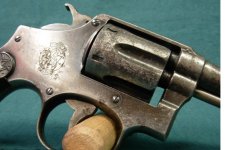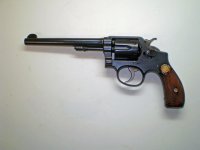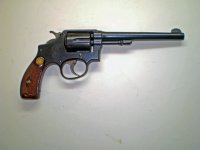Ok,this is a nickel plated,5 screw,32 wcf,fixed sight gun.The serial number is 1068**,the grips have no pencil mark but are marked like they were punched somehow,see pic,the barrel is 5 inches long.The patent dates are oct 8 01,dec17,01,feb 8 06sept 14 09,dec29,14.The gun locks up nice and tight,nickel is very decent with no flaking.It appears to be a second model hand ejector to me but that is why I am here for advise.I would like to know the value of this gun.Thanks in advance for any knowledge shared on this fine firearm.
Attachments
Last edited:

